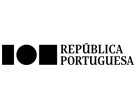


Publication in the Diário da República: Despacho nº 10765/2011 - 30/08/2011
6 ECTS; 2º Ano, 1º Semestre, 30,0 T + 16,0 PL + 14,0 TP , Cód. 300112.
Lecturer
- Rui da Costa Marques Sant' Ovaia (2)
- Cecília de Melo Correia Baptista (2)
- Marco António Mourão Cartaxo (2)
(1) Docente Responsável
(2) Docente que lecciona
Prerequisites
Not applicable.
Objectives
An overview of some environmental issues of great relevance. Provide the knowledge required to debate these issues.
Students should be able to identify key monitoring parameters and describe the major treatment technologies available.
Program
Theoretical component
1. Atmospheric pollution: Gaseous emissions. Case studies concerning the production of energy. Atmospheric contaminants and treatment systems. Legislation and International Agreements. Atmospheric dispersion modeling. Applications of the Gaussian model.
2. Hydric pollution: Liquid effluents. Emission limit values. Dissolved oxygen: degradation and recovery in the hydrological environment. Conventional treatment systems.
3. Solid Wastes: Management systems. Landfills. Treatment of urban solid waste: organic and energetic valorisation.
4. Unconventional treatment technologies. Soil remediation: electrokinetic remediation of soils, other types of remediation of soils and groundwater. Advanced Oxidation Processes: non-electrochemical oxidation advanced processes(non-photochemical and photochemical methods) and electrochemical oxidation advanced processes (direct and indirect). Electrochemical Reduction in water treatment.
5.Bioremediation: Main organic pollutants. Contamination plumes generated by leaks and spills. Mechanisms of natural and accelerated degradation. Factors influencing microbial growth and bioremediation. Bioremediation "in situ" and "ex situ" - advantages and limitations. Bioremediation of groundwater. Bioremediation of soils. Phytoremediation. Bioremediation solid phase. Bioremediation in suspended phase. Bioremediation processes used for degradation of specific compounds.
Practical component
1. Degradation of acetone by AOPs (Fenton).
2. Electrokinetic remediation of a soil contaminated with lead.
3. Bioremediation of a soil using biosurfactants produced by yeasts.
Evaluation Methodology
Final grade - weighted average of assessment components:
1: Written test (10%).
2, 3 and 4: Written test, thematic work and reports of the experimental works (67%).
5: Written test or thematic work and report of the experimental work (23%).
Bibliography
- Hendricks, D. (1996). Water treatment unit process : physical and chemical. Boca Raton: CRC - Taylor & Francis
- Rowe, D. e Peavy, H. e Tchobanoglous, G. (1985). Environmental engineering. New York: Mcgraw - Hill
- Sincero, A. e Sincero, G. (1996). Environmental engineering : a design approach. New Jersey: Prentice Hall
Teaching Method
Lectures where the fundamental principles are described. Theoretical and practical classes where the resolution of application exercises is done and laboratory works about the subjects taught.
Software used in class
Not applicable.
















